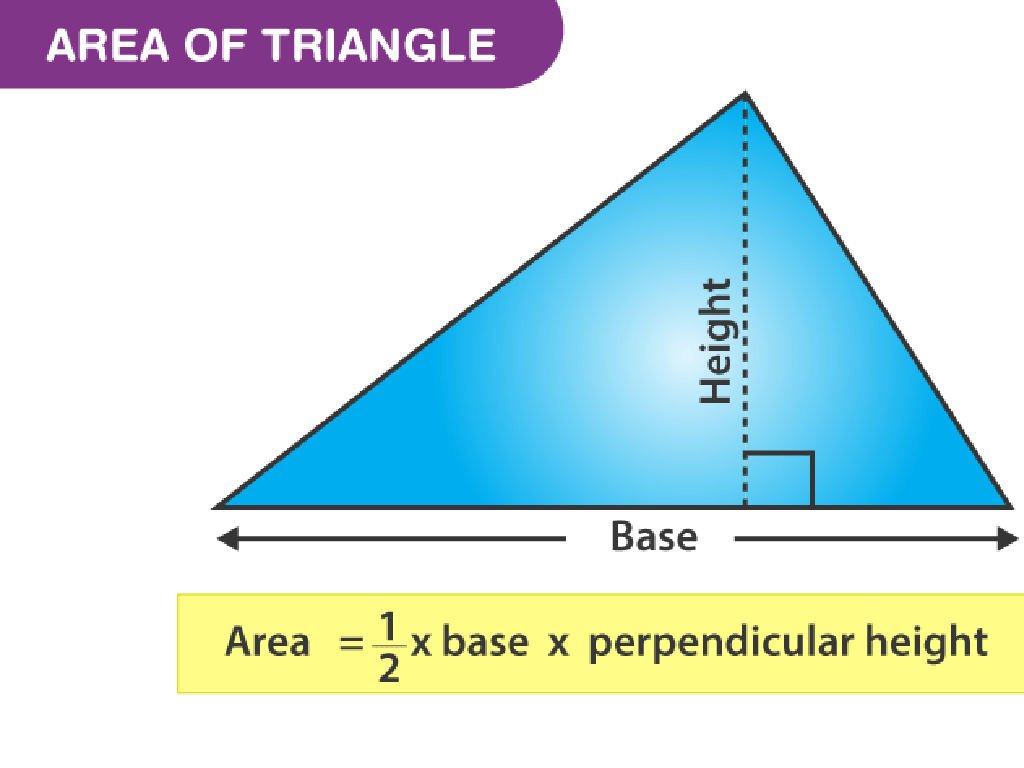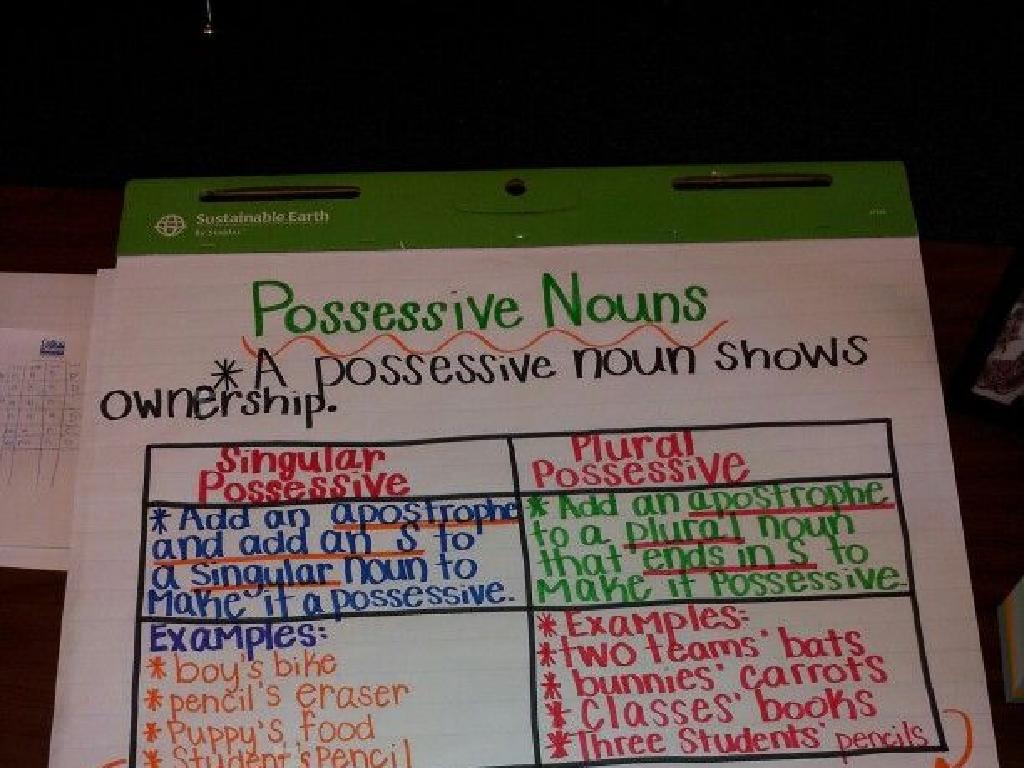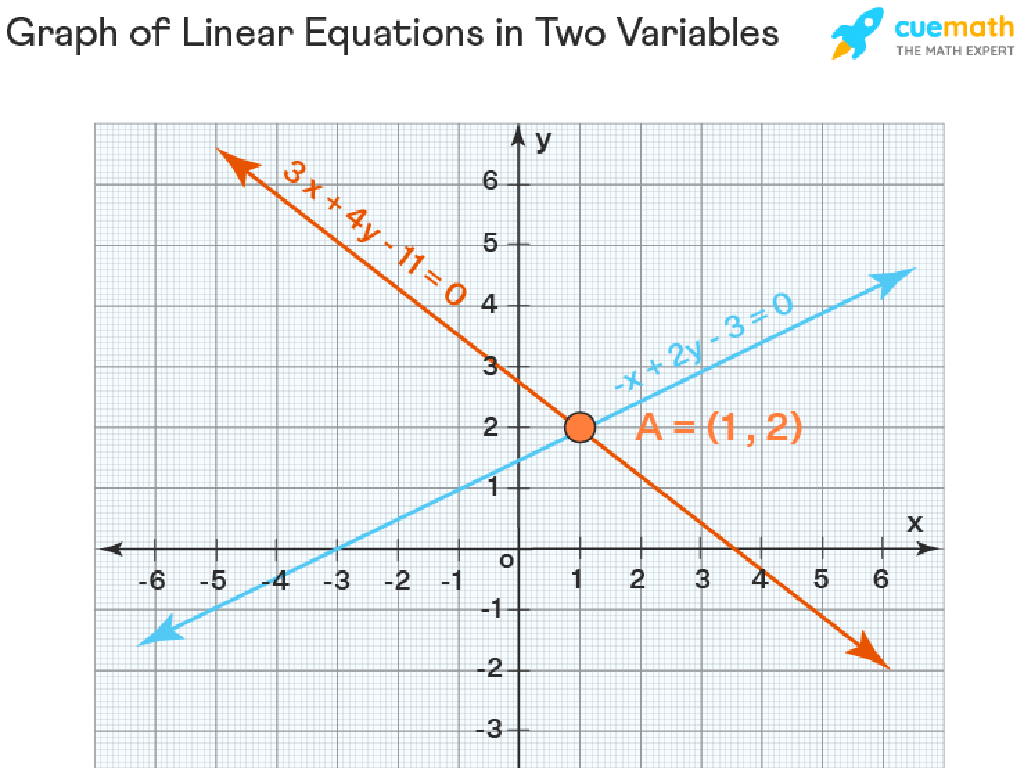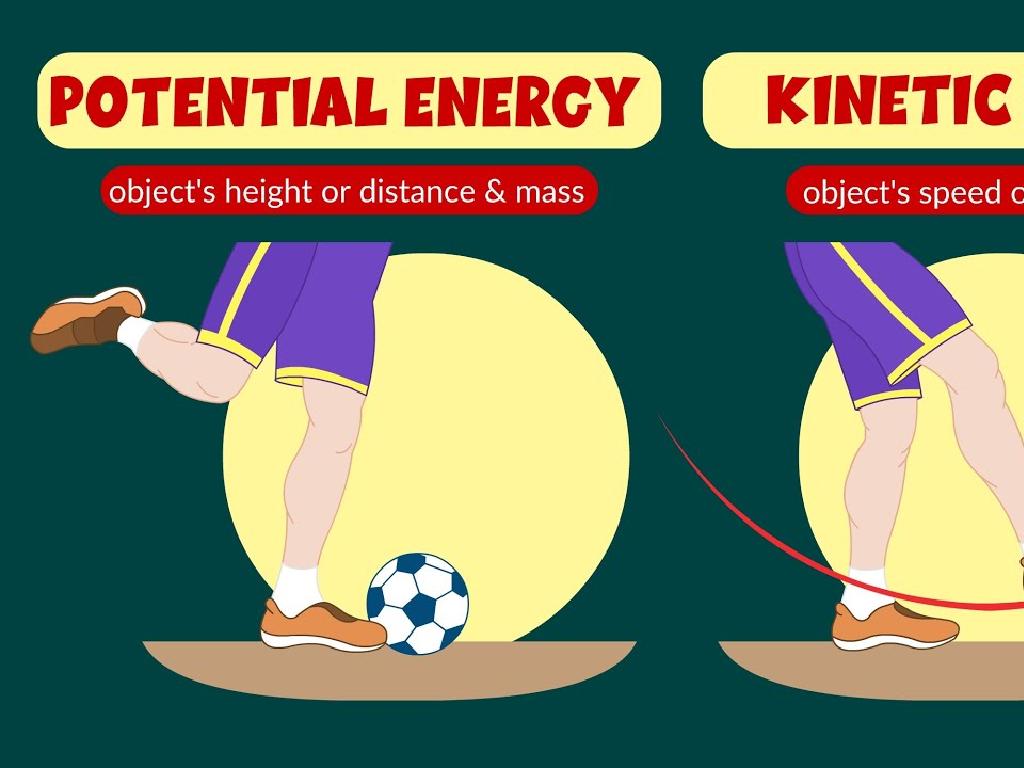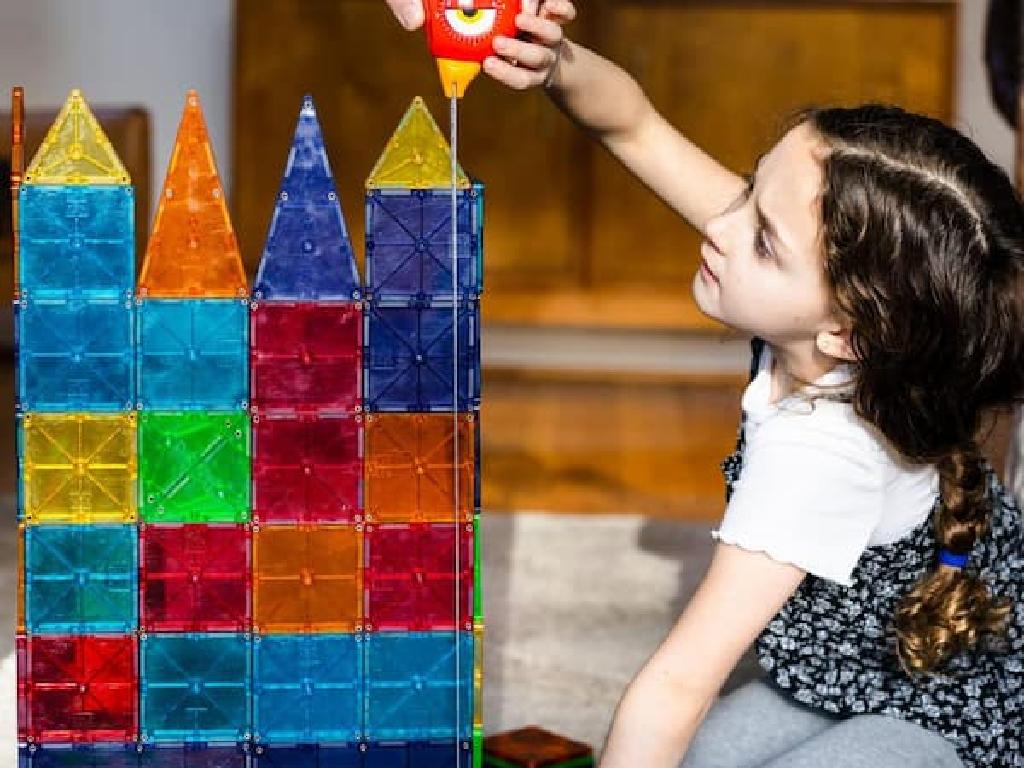Percent Of Change
Subject: Math
Grade: Eighth grade
Topic: Percents
Please LOG IN to download the presentation. Access is available to registered users only.
View More Content
Understanding Percent of Change
– What are percents?
– Percents in daily life
– Discounts, interest rates, and statistics
– Defining percent of change
– The ratio of change to the original amount
– Calculating percent of change
– Use the formula (New Value – Original Value) / Original Value × 100%
|
This slide introduces students to the concept of percent of change, a fundamental aspect of percents in mathematics. Begin by explaining what percents are and their representation of ratios out of 100. Highlight how percents are encountered in everyday life, such as in calculating discounts, interest rates, and understanding statistics. Define percent of change as a measure of how much a quantity has increased or decreased in comparison to its original amount. Teach students the formula for calculating percent of change and provide examples to illustrate the concept. Encourage students to think of real-life scenarios where they might need to calculate percent of change, such as when shopping during a sale or tracking their progress in a video game.
Understanding Percent of Change
– Define percent: part per 100
– A percent is a ratio that compares a number to 100
– Percent usage in daily life
– Discounts, interest rates, and statistics
– Convert fractions to percents
– Example: 1/2 to percent is 1/2 * 100 = 50%
– Convert decimals to percents
– Example: 0.75 to percent is 0.75 * 100 = 75%
|
This slide introduces the concept of percent as a fundamental building block in understanding percent of change. Begin by defining percent as a part out of 100, which is a ratio or fraction that can be used to compare numbers. Provide relatable examples such as discounts during shopping, interest rates for savings accounts, and statistics in sports to illustrate how percents are used in everyday life. Teach students the methods for converting fractions and decimals to percents by multiplying by 100. This will set the stage for understanding how to calculate percent of change, which is a crucial skill in various real-life situations and mathematical problems.
Understanding Percent of Change
– Define Percent of Change
– The ratio of the amount of change to the original amount, expressed as a percentage.
– Percent Increase vs Decrease
– Increase means the number went up, decrease means it went down.
– Percent of Change Formula
– Calculate with: (Change / Original) x 100%
– Applying the formula in problems
– Use the formula to solve real-world problems involving financial changes, weight loss, etc.
|
This slide introduces the concept of Percent of Change, a fundamental topic in understanding how numbers can be compared over time or between different scenarios. It’s crucial to differentiate between percent increase and decrease, as they indicate different directions of change. The formula provided is a tool for calculating the percent of change, which is a valuable skill in various real-life situations such as calculating discounts, interest rates, or growth rates. Encourage students to practice with examples and to understand the practical applications of this concept in everyday life.
Calculating Percent Increase
– Identify original and new amounts
– Calculate the amount of increase
– Subtract original from new amount
– Apply percent of change formula
– Use formula: (Increase ÷ Original Amount) × 100%
– Practice with real-life examples
– Example: If a shirt was $20 and now is $25, what’s the percent increase?
|
This slide is aimed at teaching students how to calculate the percent increase between two amounts, which is a key concept in understanding percents. Start by identifying the original amount and the new, higher amount. Then, find the difference between these two amounts to determine the increase. To find the percent of increase, divide the increase by the original amount and multiply by 100 to get the percentage. Provide students with relatable examples, such as price changes in items they are familiar with, to illustrate the concept. Encourage them to practice with different scenarios to gain a solid understanding of how to apply the percent of change formula for increases.
Calculating Percent Decrease
– Identify original and new amounts
– Original amount is the starting value, new amount is the ending value
– Calculate the amount of decrease
– Subtract new amount from original to find decrease
– Apply percent of change formula
– Use formula: (Decrease/Original Amount) x 100%
– Understand percent decrease
– Percent decrease shows reduction in value over time
|
This slide is aimed at teaching students how to calculate the percent decrease between two values. Start by identifying the original amount, which is the initial value before the decrease, and the new amount, which is the value after the decrease. To find the amount of decrease, subtract the new amount from the original amount. Then, apply the percent of change formula for decrease by dividing the decrease by the original amount and multiplying by 100 to get the percentage. It’s important for students to understand that percent decrease is a measure of how much a value has reduced over time. Provide examples such as price discounts or population changes to illustrate the concept.
Exploring Percent of Change
– Calculating price increase
– If a product was $50 and now is $75, the percent of change is a 50% increase.
– Understanding discounts
– A $40 shirt with a 25% discount means the new price is $30.
– Analyzing population growth
– From 1,000 to 1,500 people in a town is a 50% increase in population.
|
This slide aims to illustrate the concept of percent of change through practical examples. Start with explaining how to calculate the percent increase in price by finding the difference between the new and old price, then dividing by the old price and multiplying by 100. For discounts, show how to calculate the decrease in price as a percent of the original price. With population growth, demonstrate how to calculate the percent change when the population increases. These real-world examples will help students grasp the concept of percent of change and how it can be applied in various scenarios. Encourage students to practice with additional examples and to think of other areas where percent of change is relevant.
Class Activity: Calculating Percent of Change
– Problem 1: Price percent increase
– If a book was $8 and now is $10, what’s the % increase?
– Problem 2: Weight percent decrease
– A bag of apples was 5lbs, now it’s 4lbs. Calculate % decrease.
– Problem 3: Attendance percent change
– School concert had 150 attendees, now 180. Find the % change.
|
This slide presents three practice problems for students to apply their knowledge of percent of change. For the first problem, guide students to find the difference in price, divide by the original price, and multiply by 100 to get the percent increase. The second problem involves a decrease in weight, where students will subtract the new weight from the original, divide by the original weight, and multiply by 100. The third problem is a general percent of change where students will determine if it’s an increase or decrease and then apply the same method to find the percent change. Encourage students to express their answers as percentages and to check their work. Possible activities include working in pairs, solving on the board, or creating a poster with their solutions.
Class Activity: Calculating Percent of Change
– Group activity introduction
– Gather materials for the task
– Each group needs worksheets, calculators, and price tags
– Calculate percent of change
– Use the formula (New Value – Original Value) / Original Value × 100%
– Relate to real-life scenarios
– Think of examples like discounts, inflation, or profit margins
|
This activity is designed to help students apply their knowledge of percent of change to situations they might encounter outside of the classroom. Divide the class into small groups and provide each with the necessary materials. Students will use the price tags to determine the original and new prices of items and then calculate the percent of change using the provided formula. Encourage them to discuss how this concept appears in real life, such as during sales, when observing price increases, or when analyzing financial data. This hands-on experience will solidify their understanding and show the practicality of math in everyday life. Possible variations of the activity could include comparing discounts at different stores, calculating the effect of inflation on everyday goods, or determining profit margins for a school fundraiser.
Conclusion: Mastering Percent of Change
– Recap percent of change concepts
– Review: Percent of change = (New Value – Original Value) / Original Value × 100%
– Understand its importance
– Useful in finance, shopping, and statistics
– Encouraged to practice at home
– Build confidence with more problems
– Tackling diverse problems enhances skills
|
This slide aims to consolidate the students’ knowledge on percent of change, emphasizing its relevance in real-world scenarios such as calculating discounts, interest rates, and statistical data analysis. Reinforce the formula and encourage students to understand not just how to calculate percent of change, but also why it’s a valuable tool in various aspects of life. Motivate them to continue practicing with additional problems at home to gain proficiency and confidence in the concept. Provide a variety of practice problems that challenge their understanding and ensure they are comfortable with both increase and decrease scenarios.

